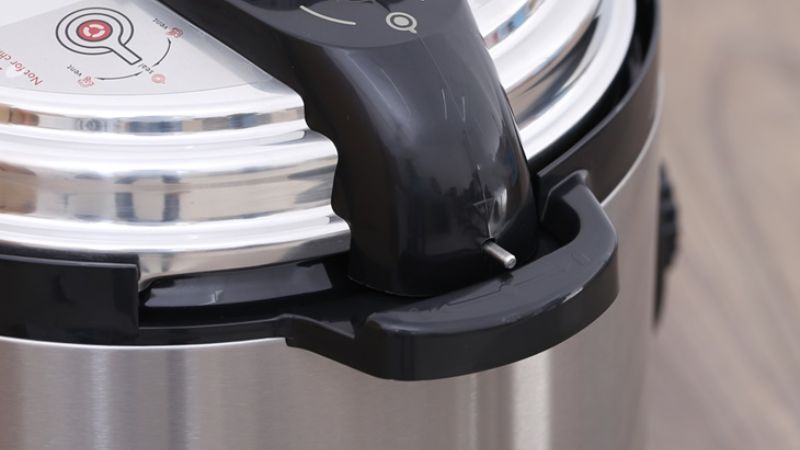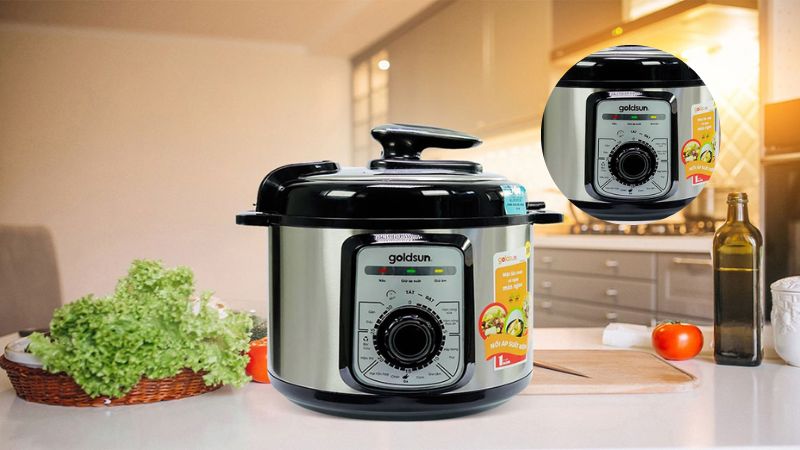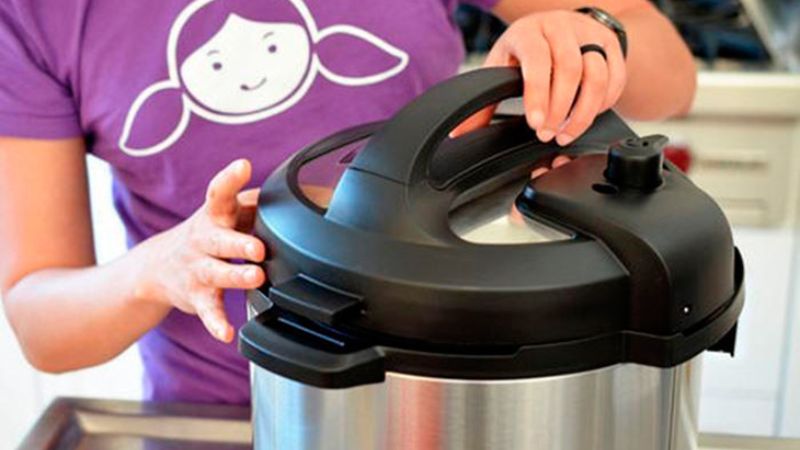Understanding and adhering to safety protocols is crucial when using a pressure cooker. If not used properly, it can pose serious risks. In this article, we’ll elucidate the essential safety features of pressure cookers that you should be aware of to ensure your safety and that of your family.
1 Release the Pressure Valve when Overpressurized
Conventional pressure cookers (both manual and electric) are typically equipped with a pressure release valve. The function of this valve is to release steam when the pressure inside the cooker exceeds the safe limit.
Utilizing this feature ensures that the cooking process is safe for the user. To prevent food or dirt from clogging the valve, regular cleaning of the pressure release valve is necessary.
 Release the Pressure Valve when Overpressurized
Release the Pressure Valve when Overpressurized
2 Locking Valve
Pressure cookers also feature a locking valve designed to secure the lid in place. When the pressure inside the cooker is high, do not open the lid. This locking valve serves as a safety measure, ensuring that the lid remains closed until the steam is completely released and only a negligible amount remains.
However, after the pressure release valve has been activated, exercise caution when opening the lid. Avoid positioning your face directly in front of the steam release and keep your hands away from the vent as hot steam may still escape and cause severe burns.
 Locking Valve
Locking Valve
3 Temperature Control and Anti-Overflow Feature
During cooking, certain dishes like porridge or soup may overflow if the amount of water and food is not carefully calculated. More dangerously, the food may overflow onto the pressure release valve or the lid, or even spill out, hindering the cooking process.
Electric pressure cookers boast an effective anti-overflow feature. Consequently, cleaning the cooker also becomes more manageable.
Note: Despite the anti-overflow feature, it is advisable to estimate the food quantity appropriately to match the cooker’s capacity and prevent overflow.
 Temperature Control and Anti-Overflow Feature
Temperature Control and Anti-Overflow Feature
4 Automatic Shut-off in Case of Overheating
When the pressure and temperature inside the cooker exceed the permissible limit, the pressure cooker will automatically shut off to ensure user safety. This may occur due to incorrect cooking mode selection, resulting in an excessive temperature build-up. The automatic shut-off feature prevents hazardous incidents in cases where the temperature cannot be self-regulated.
5 Operates Only with a Securely Closed Lid
The pressure cooker will not function if the lid is not securely closed, and the body and lid are not properly aligned. In some cases, users may forget to close the lid properly, and this safety feature prevents potential dangers during cooking.
Therefore, be cautious and ensure that the lid is securely closed and aligned with the body for stable operation, guaranteeing no overflow when the pressure and temperature rise.
 Operates Only with a Securely Closed Lid
Operates Only with a Securely Closed Lid
Using a pressure cooker offers numerous benefits, but safety remains the top priority. Always read the user manual carefully and follow the instructions diligently to avert unwanted accidents. By understanding and implementing these safety features, you’ll enjoy a safe and wonderful cooking experience with your pressure cooker.
Troubleshooting Tips for Super-Speed Kettle Issues
Having difficulty with your kettle? This article will offer some insight into the potential issues that can arise when using a supercharger, as well as tips on how to prevent and address them. From water not boiling to loud noises and burning smells, discover some helpful information on ensuring safe and effective use of your device.
































